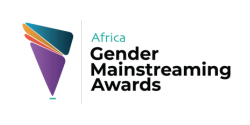Women with disabilities are particularly disadvantaged due to the multiple forms of discrimination they experience. For example, disabled girls are the least prioritised in terms of access to school and education.
Development activities such as income-generating programmes for women are largely not accessible to women with disabilities and do not take active steps to include disabled women.
This award recognises and acknowledges companies that have strategies in place to allow for future disability programmes or that implemented sustainable disability programmes which have enhanced skills and provided employment opportunities for people with disabilities.
Individual
Nominate an Individual for a Gender Mainstreaming Awards category.
Company
Nominate a company for a Gender Mainstreaming Awards category.
| Aspects Adjudicated Upon | Weighting | What Information Needs to be Furnished | Criteria being applied in measurement |
| Design and Innovation | 30 | Detailed Overview of the Programme | Design, Innovation, detail and planning of the programme |
| Management | 10 | How the programme is/was managed | People involved / Frequency of meetings / Monitoring of implementation / Systems Utilised |
| Communication | 10 | How the programme was communicated | To Whom / Medium / Frequency / Format |
| Return on Investment / Business (Economic) Impact | 40 | Impact of the programme | Contribution to sustainability / profitability/ROI |
| Gender Targets (Broad Base) | 10 | Who the beneficiaries were | Number of women/percentage of staff/targets achieved |
